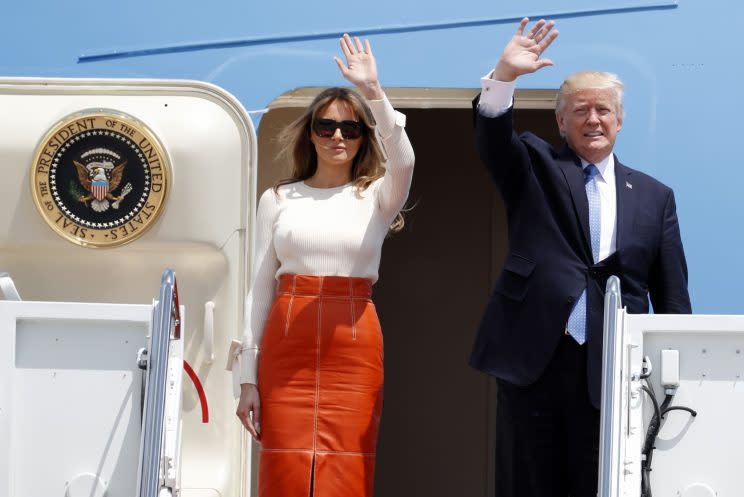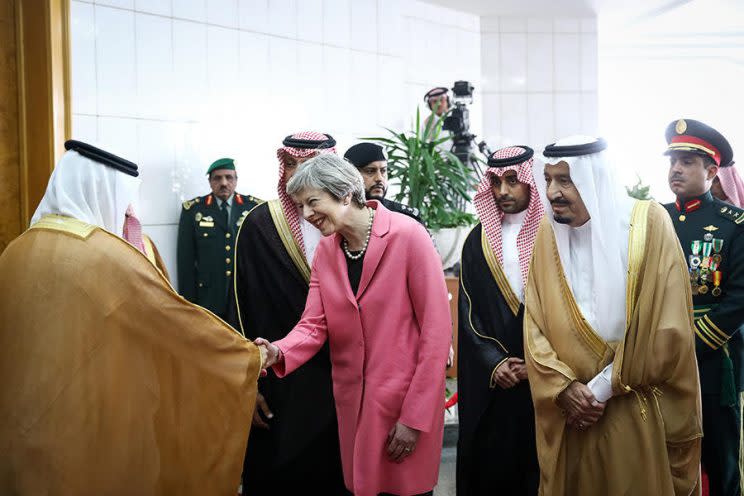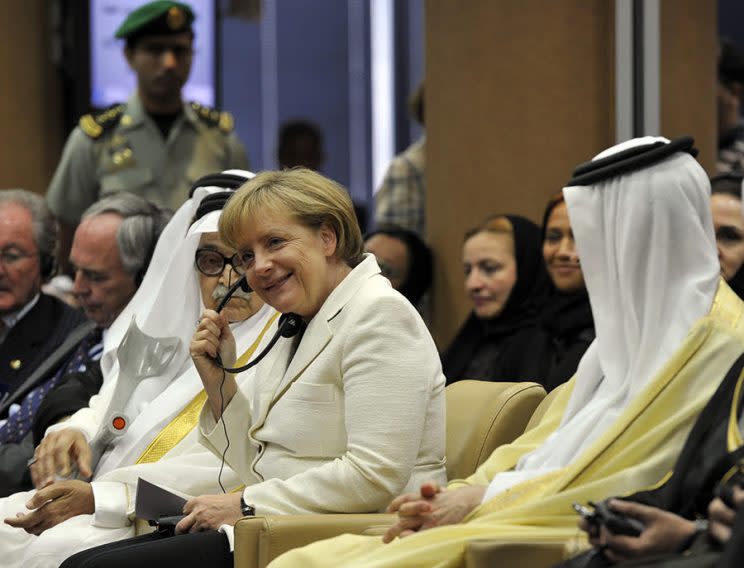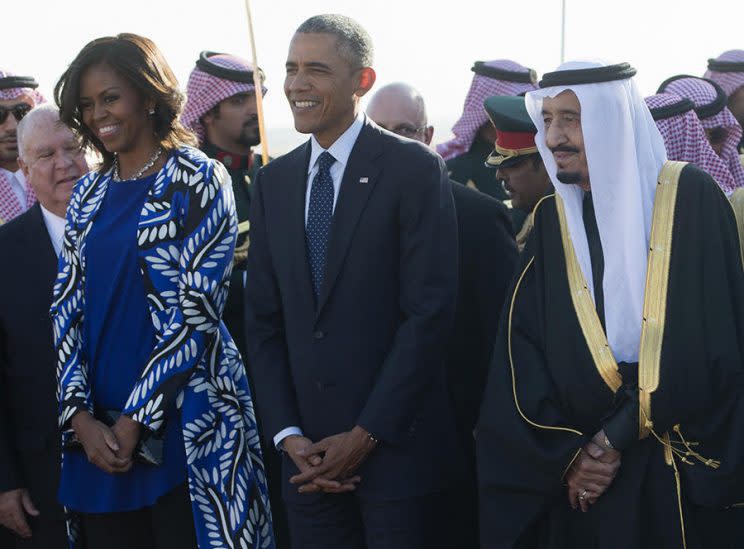Will Melania Trump Wear a Headscarf in Saudi Arabia?

President and Melania Trump left on Friday for their first overseas trip and, as part of the three-country tour, will visit the Islamic country of Saudi Arabia, where women are expected to dress conservatively and keep their heads covered.
“Of course [Melania] will be joining her husband for the entire trip, and yes, she will be making several public appearances,” spokeswoman Stephanie Grisham told the Washington Examiner last week. Ivanka Trump and Jared Kushner will also be joining the first couple on the trip.
While in Israel, the Trumps will discuss “the threats posed by Iran and its proxies,” while a meeting with Pope Francis is scheduled in Italy, and one with Muslim leaders is planned in Saudi Arabia. The “outreach trip,” which aims to emphasize the United States’ commitment to world peace, ends with the president in Brussels to attend the NATO G-7 meetings.

In Saudi Arabia, the former-model-turned-FLOTUS may have to tone down her high-end wardrobe, which includes spiky stilettos, colorful patterns, and clothes by American designers whose fashion shows are banned in the country. She may also have to adhere to the country’s strict dress code for women: long sleeves, ankle-length dresses (no pants), and headscarves. Russian state media reported that Foreign Minister Adel al-Jubeir said that Melania is welcome to wear “any style in clothing” in Saudi Arabia.
World leaders are expected — but not required — to comply with the dress code of the country, although plenty have opted out, stirring both criticism for not adhering to an ideology often viewed oppressive, and disdain for disregarding cultural norms.
In April, British Prime Minister Theresa May visited Saudi Arabia and neglected to cover her head, after making remarks that she wanted to inspire Saudi citizens about “what women can achieve.”

And earlier this month, German chancellor Angela Merkel touched down in Saudi Arabia with her head uncovered, following a self-imposed burqa ban in her native country “wherever it is legally possible.”

Other world leaders who have not worn the headscarf include Hillary Clinton during a 2012 meeting with Muslim leaders, Laura Bush on a 2007 trip to Saudi Arabia, and Michelle Obama in 2015 to honor the late King Abdullah after his death, ultimately sparking the hashtag #Michelle_Obama_Immodest.”

Exceptions include Michelle Obama wearing a headscarf to Indonesia, another Muslim country, in 2010 and Swedish Trade Minister Ann Linde, along with numerous female party members on a trip to Iran.
Yet despite any backlash against the headscarf, plenty view it as a symbol of feminism and solidarity, especially in the aftermath of the president’s controversial travel ban for Muslim-majority countries. In March, Nike debuted a Pro Hijab for female athletes to express their religious beliefs, and Hijarbie, a Barbie doll that wears a hijab, has become an Instagram superstar.
“Oppression means the taking away of someone’s power, their agency,” Dalia Mogahed, director of research at the Institute for Social Policy and Understanding, told USA Today in March. “Yet a woman in a hijab is only covering her body and hair, not her voice or intellect.”
Read more from Yahoo Style + Beauty:
Follow us on Instagram, Facebook, and Pinterest for nonstop inspiration delivered fresh to your feed, every day. For Twitter updates, follow @YahooStyle and @YahooBeauty.
